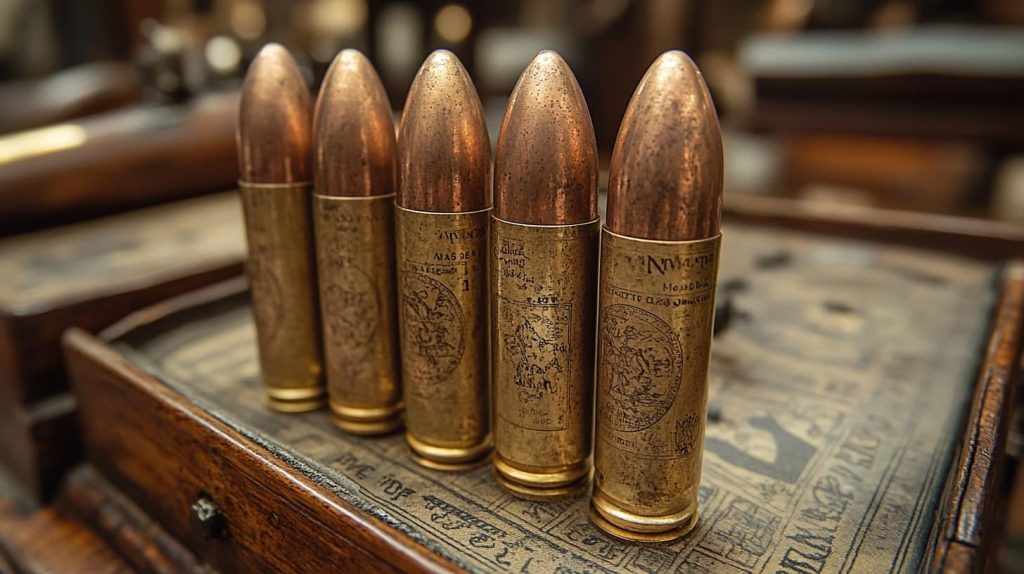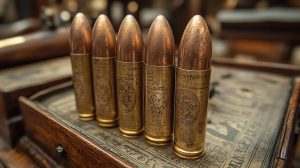The Anatomy and Evolution of Ammunition

Ammunition is the lifeblood of firearms, an intricate blend of engineering and innovation that has evolved over centuries. From its earliest iterations in the form of rudimentary projectiles to the sophisticated cartridges of today, the story of ammunition is a tale of human ingenuity and adaptability. To understand the significance of ammunition, one must explore both its components and the historical milestones that have shaped its development.
What Makes Up a Cartridge?
Modern ammunition consists of four primary components: the bullet, the case, the propellant, and the primer. Each part plays a critical role in the firing process, working in harmony to deliver precise and reliable performance.
- The Bullet
The bullet is the projectile that is propelled from the firearm to hit the target. Typically made of lead, copper, or a combination of metals, bullets come in various shapes and sizes to suit different applications, from hunting to self-defense. - The Case
The case, often made of brass, steel, or aluminum, serves as the container for the other components. Its role is to house the bullet, propellant, and primer, ensuring they are properly aligned for firing. - The Propellant
The propellant, commonly referred to as gunpowder, is a chemical mixture that burns rapidly to create high-pressure gas. This gas propels the bullet out of the barrel. Smokeless powder, introduced in the late 19th century, replaced traditional black powder due to its efficiency and reduced residue. - The Primer
The primer is a small, sensitive component located at the base of the cartridge. It ignites when struck by the firearm’s firing pin, setting off the chain reaction that burns the propellant and expels the bullet.
Each component has undergone significant advancements over time, improving accuracy, safety, and reliability.
A Journey Through Ammunition History
Early Projectiles: The Dawn of Ammunition
The history of ammunition begins with ancient weaponry. Before the advent of firearms, projectiles such as stones, arrows, and darts served as ammunition for bows, slings, and atlatls. These early designs laid the groundwork for the idea of delivering force at a distance.
The Age of Gunpowder and Matchlocks
The introduction of gunpowder in the 9th century by Chinese inventors revolutionized warfare. Early firearms, such as hand cannons and matchlocks, relied on loose gunpowder, a separate projectile, and a fuse or match to fire. This method was cumbersome and often dangerous.
The Advent of the Cartridge
By the 17th century, the concept of a cartridge began to take shape. Paper cartridges, which combined a pre-measured amount of powder and a projectile wrapped in paper, simplified the loading process for muskets. Soldiers could now load faster and with greater consistency. However, these cartridges were still primitive, requiring a separate ignition source.
Metallic Cartridges: A Game Changer
The 19th century saw the birth of metallic cartridges, marking a turning point in ammunition history. French gunsmith Benjamin Houllier patented the first fully metallic cartridge in 1846. These cartridges combined the projectile, powder, and primer into a single, self-contained unit, drastically improving reliability and ease of use.
The Rise of Smokeless Powder
In the late 19th century, smokeless powder replaced black powder as the primary propellant. Invented in 1884 by Paul Vieille, smokeless powder offered several advantages: it produced less smoke, allowed for higher velocities, and reduced fouling in the barrel. This innovation paved the way for the development of modern firearms and ammunition.
Modern Innovations
Today, ammunition continues to evolve. Advancements in materials, such as polymer cases and bonded bullets, have enhanced performance and durability. Specialized rounds, such as hollow points, tracers, and armor-piercing ammunition, cater to specific needs. The integration of smart technology, such as electronic primers and guided projectiles, hints at the future of ammunition.
The Art of Ammunition Craftsmanship
Ammunition is not just a functional tool; it is also a product of craftsmanship. Historical cartridges, such as those used in revolvers or rifles during the Civil War, often featured intricate designs and markings. These details provide insight into the period’s manufacturing techniques and the artistic sensibilities of the time.
Modern ammunition retains elements of this craftsmanship, with manufacturers investing in precision engineering and quality control. Each round is a testament to the balance of art and science, ensuring reliability in critical situations.
Conclusion
The story of ammunition is a fascinating journey through history, technology, and innovation. From humble stones and black powder to the sleek, reliable cartridges of today, ammunition has transformed the way humans defend, hunt, and compete. Understanding its components and history not only deepens our appreciation for its role in modern life but also connects us to the ingenuity of those who came before us.
Whether you’re a collector, enthusiast, or simply curious, the next time you see a cartridge, take a moment to reflect on the centuries of innovation it represents. Ammunition is more than a tool—it’s a piece of history in your hands.




